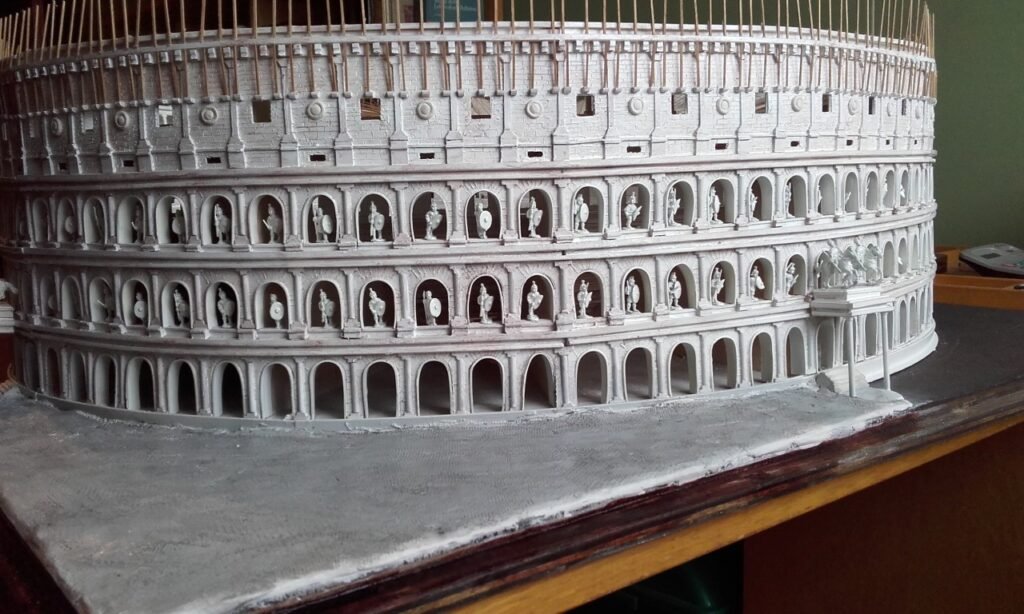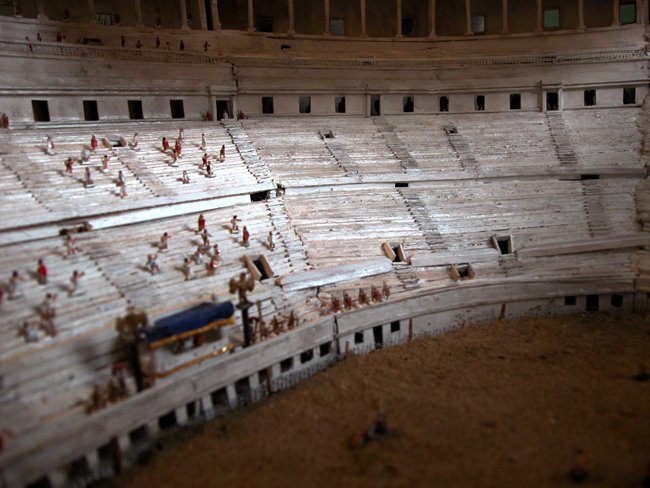In the XVIII century
it became fashionable for the rich to collect models of buildings, ruins and famous monuments, made of wood or cork. This craft, that originated in Naples in the XVI century with the scenarios of the cribs, developed to the benefit of wealthy collectors and travelers who only then had started to consider old ruins interesting and romantic.
In 1778 the architect Thomas Hardwick had a model built by the Neapolitan master Giovanni Altieri, in scale 1:120, to exhibit at the Society of Antiquaries as a complement to the study he had made on the amphitheatre. Hardwick made some drawings, which we still have, but the model has been lost. There is also evidence of another model being made in 1789, based on the measurements carried out by the French architect Antoine Désgodetz (1653-1728). The same Désgodetz drawings were used by Antonio Chiti for the models that he sold all round Europe; two of these models of the Colosseum are still in Kassel and Darmstadt.
The most famous model of the Colosseum is without any doubt the wooden reconstruction by Carlo Lucangeli. Lucangeli worked on it for 22 years, starting in 1790. He was the one who undertook the first scientific survey of the Colosseum in order to identify the architectural details. His studies led to the discovery of hidden parts of the monument, like the wall of the retropodio and the so-called Passaggio di Commodo.
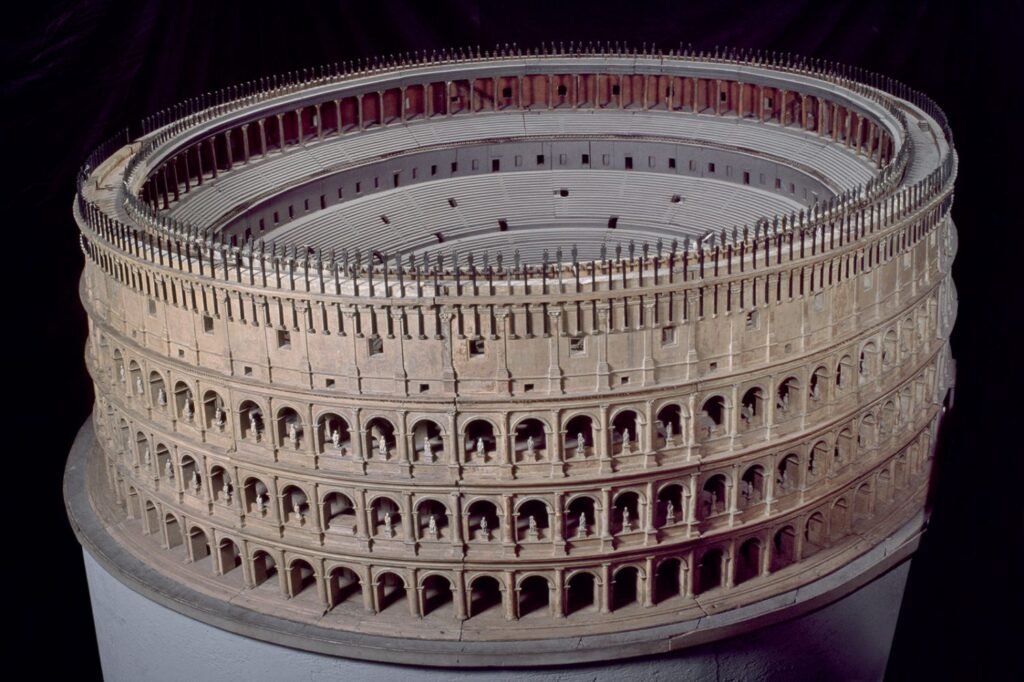
Lucangeli’s notes were published after his death and circulated among the intellectuals, becoming one of the main sources of knowledge about the Colosseum. Between 1792 and 1805 Lucangeli had completed another cork model of “the actual state” of the Colosseum, which is now in Paris, at the École des Beaux-Arts.
When Lucangeli died in 1812 the first wooden model still wasn’t finished; it was completed only in 1815 by his son-in-law Paolo Dalbono and other artists. They added to it the ipogei of the arena (that were excavated after Lucangeli’s death and by his will), the seats and the velarium.
Lucangeli’s model had a tormented life: it was transported to London from 1815 to 1819; when it was shipped back the boxes were impounded at the Port of Rome because of customs problems. Lucangeli’s heirs sold it to the rich collector Emanuele Godoy, who placed it in his house on the Celian hill. The model passed through several hands, until in 1855 Count Zeloni proposed to the (then Vatican) State to exhibit the model for a fee inside the Colosseum, even though he had pawned it at the Monte di Pietà (the Roman official pawnshop in 1851).
The papal government did not accept that idea, and when Rome became the capital city of the new Italian nation, also the newborn Italian government remained unmoved. In 1874 it was proposed that the State should redeem the model from the Monte di Pietà, but nothing happened. In 1879 the archaeologist Rodolfo Lanciani planned an Antiquarium – a Museum – on the first floor of the amphitheatre, but the works started only in 1883.
By now, the model was considerably ruined, because its detachable sections had been “heaped up like firewood”, therefore it had to undergo restoration. In the end, in 1895 it returned to the Colosseum, but then it was temporarily moved to the Museo Nazionale Romano at Palazzo Altemps. Now at last is being exposed inside the Colosseum, to the admiration of all.
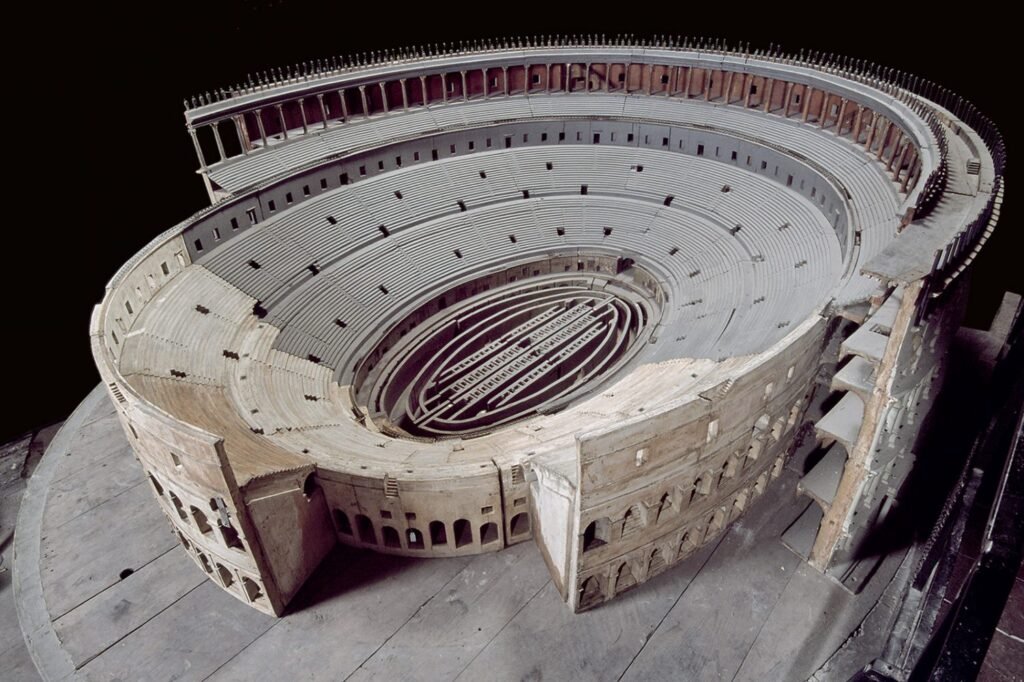
In Germany the reproductions of Carl May, who copied Chiti’s models in Kassel, and of his sons Georg and Maximilian were very popular. They made a model in 1:60 scale, finished in 1853, that is now in Aschaffenburg.
Emil Braun, classical archaeologist and secretary to the German Archaeological Institute in Rome, between 1845 and 1850 ordered cork replicas from the Roman modeler Luigi Carotti. This model is preserved in the LIndenau museum in Altenburg. The model has a height of 32.5 cm, a longitudinal axis of 100 cm and a transverse axis of 72 cm. Hence, it displays the Colosseum in a scale of 1 to 185, but the proportions of the original, which is less elongated, were not fully observed. See the whole story here.
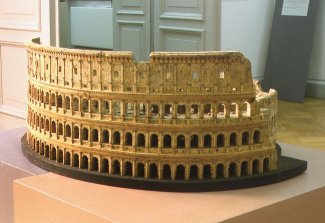
Many have asked this site for plans in order to make a model. After a quick search on Google I found that there are 3d models available for free here: https://free3d.com/3d-models/colosseum and under payment at these websites: https://sketchfab.com/tags/colosseum, https://free3d.com/3d-models/colosseum; https://www.turbosquid.com/3d-model/the-colosseum; https://www.cgtrader.com/3d-models/colosseum
Olga and Irina, from Moscow Architectural Institute, have built a beautiful model only with the help of the plans from this site and with a lot of work. Compliments! The picture of their model is here below.
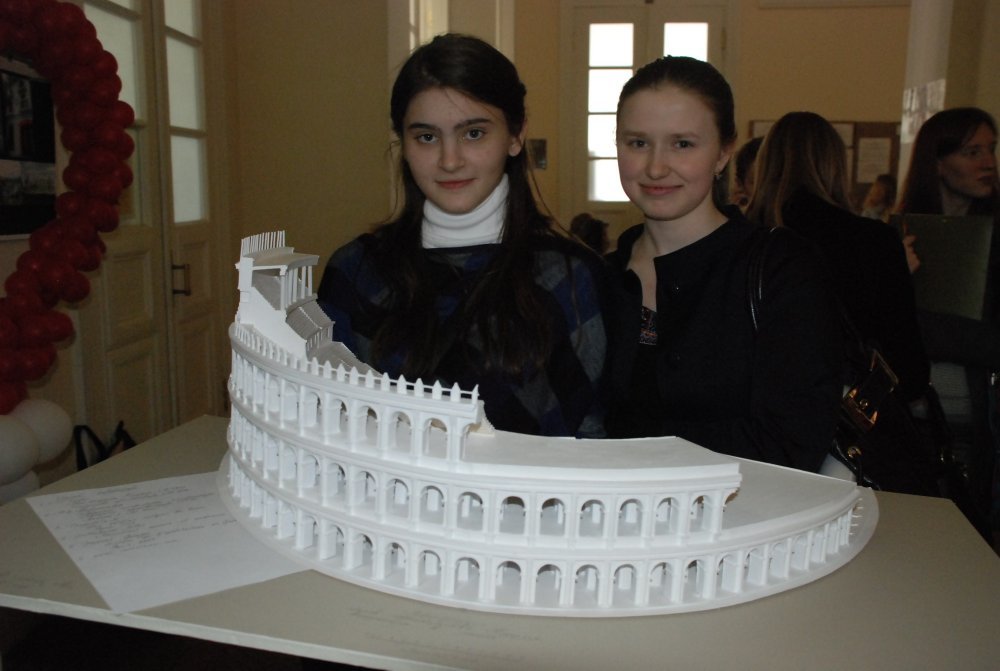
A serious attempt with Lego® was made by Ryan McNaught, who, using 200,000 Lego bricks, presented a model in cross-section with half in its present day ruined form and half as it was when Rome’s original Colosseum was built.
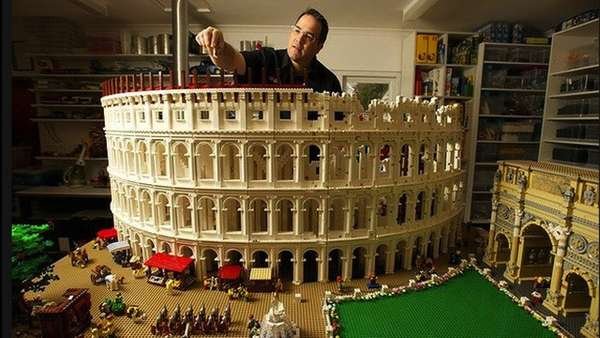
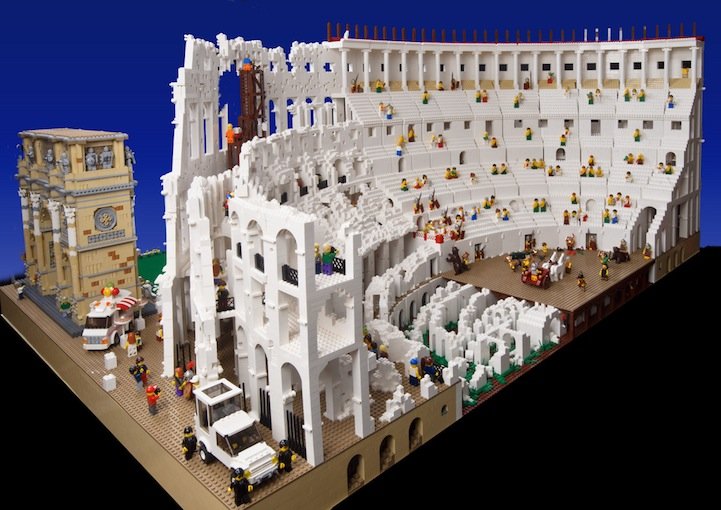
The Colosseum is now an official Lego® model: no. 10276, recreated with over 9,000 pieces. In 2020 it was the largest LEGO® set ever, now overtaken by the Eiffel Tower.
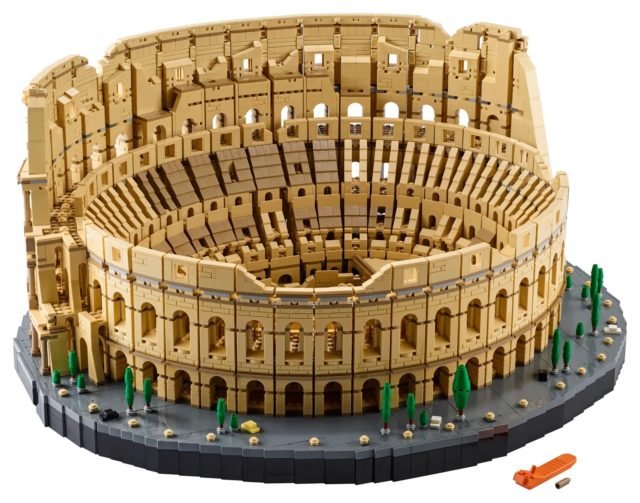
Another amazing feat is the pizza Colosseum, created in 2007 by British food artist Prudence Emma Staite – who is best known for her chocolate interiors – for a special exhibit at the Museum of London.

Recently I received the pictures of another amazing 1/250 wooden model by Gianluca Vigiliano. It was built as a challenge by Mr. Vigiliano, who was inspired by the film “The Gladiator”. All made with wooden pieces, painted and decorated with little statues of gladiators and the public. Enjoy it!!!
